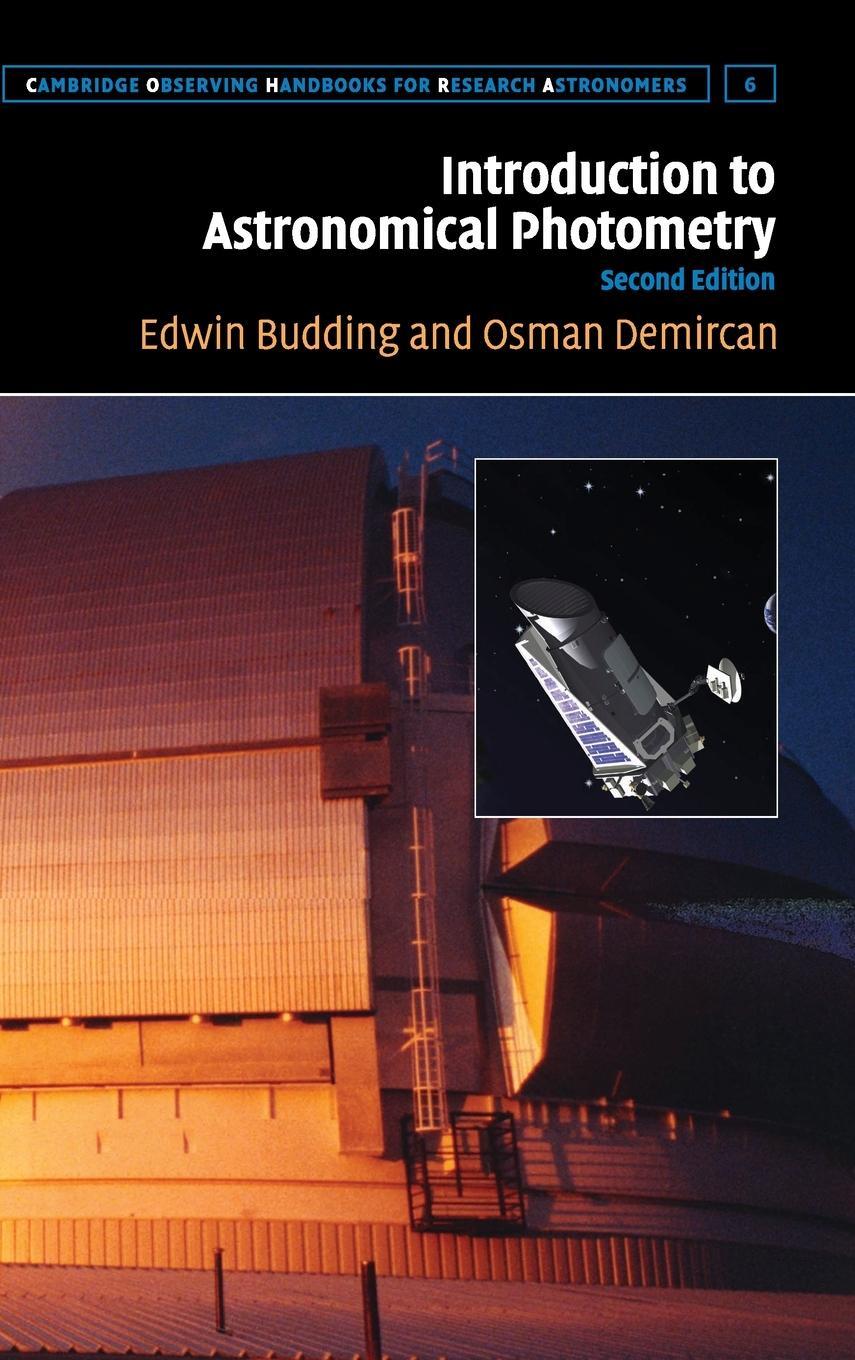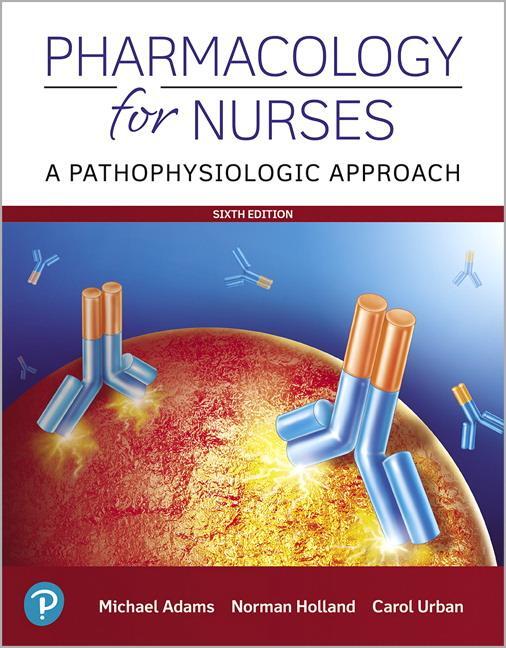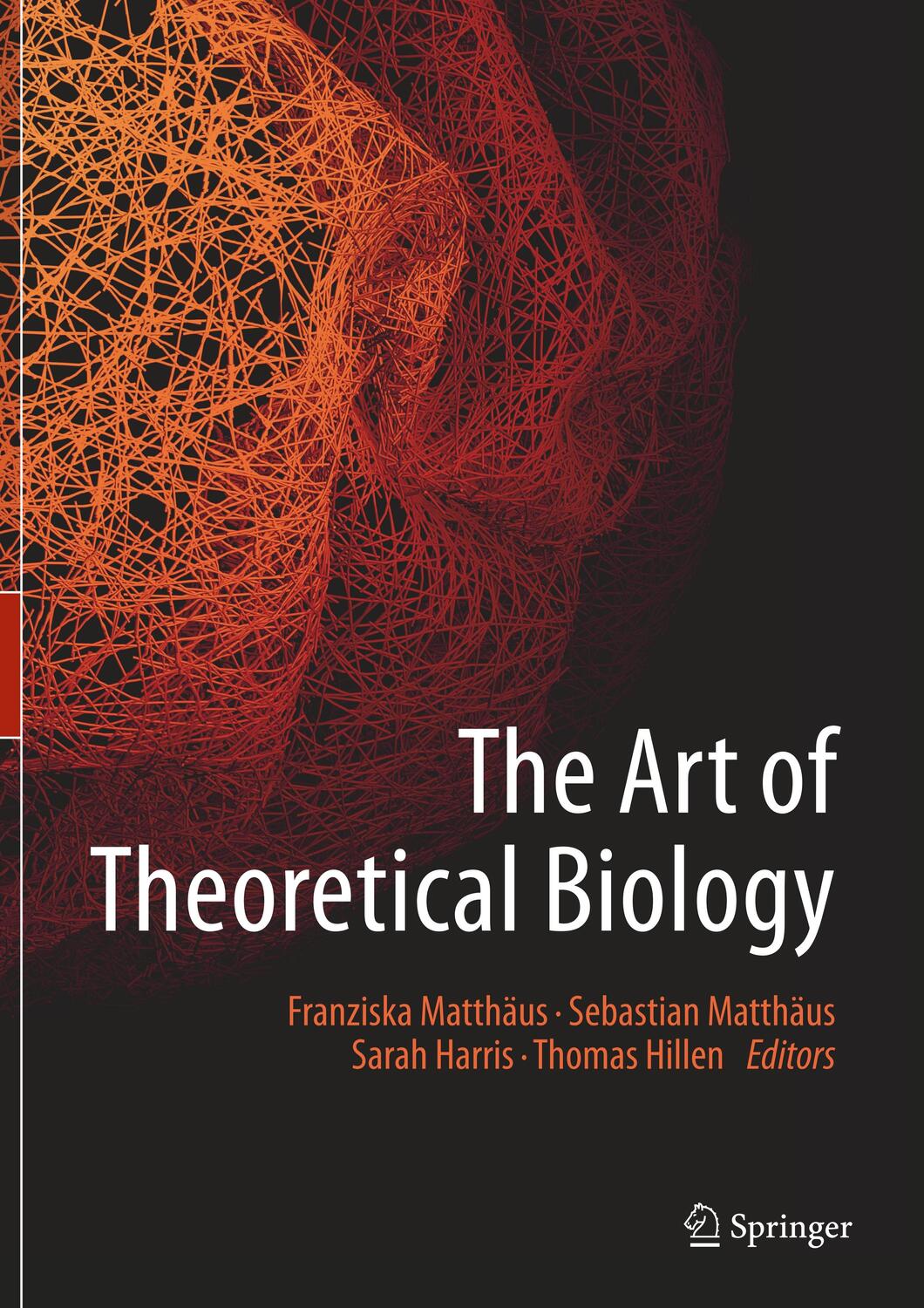Dekorationsartikel gehören nicht zum Leistungsumfang.
Sprache:
Englisch
66,65 €*
Versandkostenfrei per Post / DHL
Lieferzeit 1-2 Wochen
Kategorien:
Beschreibung
From the reviews: "...Here we have a book which we can wholeheartedly suggest. The mathematics is sound and pared to essentials; the examples are an impressive, well-chosen selection from the biomathematics literature, and the problem sets provide both useful exercises and some fine introductions to the art of modeling... Batschelet has written an introduction to biomathematics which is notable for its clarity - not only a clarity of presentation, but also a clarity of purpose, backed by a sure grasp of the field..." #Bulletin of Mathematical Biology#1 "For research workers in the biomedical field who feel a need for freshening up their knowledge in mathematics, but so far have always been frustrated by either too formal or too boring textbooks, there is now exactly what they would like to have: an easy to read introduction. This book is highly motivating for practical workers because only those mathematical techniques are offered for which there is an application in the life sciences. The reader will find it stimulating that each tool described is immediately exemplified by problems from latest publications." #Int. Zeitschrift für klinische Pharmakologie, Therapie und Toxikologie#2
From the reviews: "...Here we have a book which we can wholeheartedly suggest. The mathematics is sound and pared to essentials; the examples are an impressive, well-chosen selection from the biomathematics literature, and the problem sets provide both useful exercises and some fine introductions to the art of modeling... Batschelet has written an introduction to biomathematics which is notable for its clarity - not only a clarity of presentation, but also a clarity of purpose, backed by a sure grasp of the field..." #Bulletin of Mathematical Biology#1 "For research workers in the biomedical field who feel a need for freshening up their knowledge in mathematics, but so far have always been frustrated by either too formal or too boring textbooks, there is now exactly what they would like to have: an easy to read introduction. This book is highly motivating for practical workers because only those mathematical techniques are offered for which there is an application in the life sciences. The reader will find it stimulating that each tool described is immediately exemplified by problems from latest publications." #Int. Zeitschrift für klinische Pharmakologie, Therapie und Toxikologie#2
Zusammenfassung
In this volume the author has succeeded in presenting a truly biologically-oriented introduction to the standard mathematical methods necessary for the treatment of biological problems. The previous editions have proven to be of interest to both biologists who want to become more acquainted with mathematics as well as to mathematicians teaching introductory math courses for the life science students.
Inhaltsverzeichnis
1. Real Numbers.- 1.1 Introduction.- 1.2 Classification and Measurement.- 1.3 A Problem with Percentages.- 1.4 Proper and Improper Use of Percentages.- 1.5 Algebraic Laws.- 1.6 Relative Numbers.- 1.7 Inequalities.- 1.8 Mean Values.- 1.9 Summation.- 1.10 Powers.- 1.11 Fractional Powers.- 1.12 Calculations with Approximate Numbers.- 1.13 An Application.- 1.14 Survey.- Problems for Solution.- 2. Sets and Symbolic Logic.- 2.1 "New Mathematics".- 2.2 Sets.- 2.3 Notations and Symbols.- 2.4 Variable Members.- 2.5 Complementary Set.- 2.6 The Union.- 2.7 The Intersection.- 2.8 Symbolic Logic.- 2.9 Negation and Implication.- 2.10 Boolean Algebra.- Problems for Solution.- 3. Relations and Functions.- 3.1 Introduction.- 3.2 Product Sets.- 3.3 Relations.- 3.4 Functions.- 3.5 A Special Linear Function.- 3.6 The General Linear Function.- 3.7 Linear Relations.- Problems for Solution.- 4. The Power Function and Related Functions.- 4.1 Definitions.- 4.2 Examples of Power Functions.- 4.3 Polynomials.- 4.4 Differences.- 4.5 An Application.- 4.6 Quadratic Equations.- Problems for Solution.- 5. Periodic Functions.- 5.1 Introduction and Definition.- 5.2 Angles.- 5.3 Polar Coordinates.- 5.4 Sine and Cosine.- 5.5 Conversion of Polar Coordinates.- 5.6 Right Triangles.- 5.7 Trigonometric Relations.- 5.8 Polar Graphs.- 5.9 Trigonometric Polynomials.- Problems for Solution.- 6. Exponential and Logarithmic Functions I.- 6.1 Sequences.- 6.2 The Exponential Function.- 6.3 Inverse Functions.- 6.4 The Logarithmic Functions.- 6.5 Applications.- 6.6 Scaling.- 6.7 Spirals.- Problems for Solution.- 7. Graphical Methods.- 7.1 Nonlinear Scales.- 7.2 Semilogarithmic Plot.- 7.3 Double-Logarithmic Plot.- 7.4 Triangular Charts.- 7.5 Nomography.- 7.6 Pictorial Views.- Problems for Solution.- 8. Limits.- 8.1Limits of Sequences.- 8.2 Some Special Limits.- 8.3 Series.- 8.4 Limits of Functions.- 8.5 The Fibonacci Sequence.- Problems for Solution.- 9. Differential and Integral Calculus.- 9.1 Growth Rates.- 9.2 Differentiation.- 9.3 The Antiderivative.- 9.4 Integrals.- 9.5 Integration.- 9.6 The Second Derivative.- 9.7 Extremes.- 9.8 Mean of a Continuous Function.- 9.9 Small Changes.- 9.10 Techniques of Integration.- Problems for Solution.- 10. Exponential and Logarithmic Functions II.- 10.1 Introduction.- 10.2 Integral of 1/x.- 10.3 Properties of ln x.- 10.4 The Inverse Function of ln x.- 10.5 The General Definition of a Power.- 10.6 Relationship between Natural and Common Logarithms.- 10.7 Differentiation and Integration.- 10.8 Some Limits.- 10.9 Applications.- 10.10 Approximations and Series Expansions.- 10.11 Hyperbolic Functions.- Problems for Solution.- 11. Ordinary Differential Equations.- 11.1 Introduction.- 11.2 Geometric Interpretation.- 11.3 The Differential Equation y' = ay.- 11.4 The Differential Equation y' = ay+b.- 11.5 The Differential Equation y' = ay2+ by+ c.- 11.6 The Differential Equation dy/dx = k · y/x.- 11.7 A System of Linear Differential Equations.- 11.8 A System of Nonlinear Differential Equations.- 11.9 Classification of Differential Equations.- Problems for Solution.- 12. Functions of Two or More Independent Variables.- 12.1 Introduction.- 12.2 Partial Derivatives.- 12.3 Maxima and Minima.- 12.4 Partial Differential Equations.- Problems for Solution.- 13. Probability.- 13.1 Introduction.- 13.2 Events.- 13.3 The Concept of Probability.- 13.4 The Axioms of Probability Theory.- 13.5 Conditional Probabilities.- 13.6 The Multiplication Rule.- 13.7 Counting.- 13.8 Binomial Distribution.- 13.9 Random Variables.- 13.10 The Poisson Distribution.- 13.11Continuous Distributions.- Problems for Solution.- 14. Matrices and Vectors.- 14.1 Notations.- 14.2 Matrix Algebra.- 14.3 Applications.- 14.4 Vectors in Space.- 14.5 Applications.- 14.6 Determinants.- 14.7 Inverse of a Matrix.- 14.8 Linear Dependence.- 14.9 Eigenvalues and Eigenvectors.- Problems for Solution.- 15. Complex Numbers.- 15.1 Introduction.- 15.2 The Complex Plane.- 15.3 Algebraic Operations.- 15.4 Exponential Functions of Complex Variables.- 15.5 Quadratic Equations.- 15.6 Oscillations.- Problems for Solution.- Appendix (Tables A to K).- Solutions to Odd Numbered Problems.- References.- Author and Subject Index.
Details
| Erscheinungsjahr: | 1979 |
|---|---|
| Fachbereich: | Technik allgemein |
| Genre: | Technik |
| Rubrik: | Naturwissenschaften & Technik |
| Medium: | Taschenbuch |
| Seiten: | 668 |
| Reihe: | Springer Study Edition |
| Inhalt: |
xv
646 S. |
| ISBN-13: | 9783540096481 |
| ISBN-10: | 3540096485 |
| Sprache: | Englisch |
| Ausstattung / Beilage: | Paperback |
| Einband: | Kartoniert / Broschiert |
| Autor: | Batschelet, Edward |
| Auflage: | 3rd ed. 1979 |
| Hersteller: |
Springer-Verlag GmbH
Springer Berlin Heidelberg Springer Study Edition |
| Maße: | 235 x 155 x 36 mm |
| Von/Mit: | Edward Batschelet |
| Erscheinungsdatum: | 01.10.1979 |
| Gewicht: | 0,996 kg |
Zusammenfassung
In this volume the author has succeeded in presenting a truly biologically-oriented introduction to the standard mathematical methods necessary for the treatment of biological problems. The previous editions have proven to be of interest to both biologists who want to become more acquainted with mathematics as well as to mathematicians teaching introductory math courses for the life science students.
Inhaltsverzeichnis
1. Real Numbers.- 1.1 Introduction.- 1.2 Classification and Measurement.- 1.3 A Problem with Percentages.- 1.4 Proper and Improper Use of Percentages.- 1.5 Algebraic Laws.- 1.6 Relative Numbers.- 1.7 Inequalities.- 1.8 Mean Values.- 1.9 Summation.- 1.10 Powers.- 1.11 Fractional Powers.- 1.12 Calculations with Approximate Numbers.- 1.13 An Application.- 1.14 Survey.- Problems for Solution.- 2. Sets and Symbolic Logic.- 2.1 "New Mathematics".- 2.2 Sets.- 2.3 Notations and Symbols.- 2.4 Variable Members.- 2.5 Complementary Set.- 2.6 The Union.- 2.7 The Intersection.- 2.8 Symbolic Logic.- 2.9 Negation and Implication.- 2.10 Boolean Algebra.- Problems for Solution.- 3. Relations and Functions.- 3.1 Introduction.- 3.2 Product Sets.- 3.3 Relations.- 3.4 Functions.- 3.5 A Special Linear Function.- 3.6 The General Linear Function.- 3.7 Linear Relations.- Problems for Solution.- 4. The Power Function and Related Functions.- 4.1 Definitions.- 4.2 Examples of Power Functions.- 4.3 Polynomials.- 4.4 Differences.- 4.5 An Application.- 4.6 Quadratic Equations.- Problems for Solution.- 5. Periodic Functions.- 5.1 Introduction and Definition.- 5.2 Angles.- 5.3 Polar Coordinates.- 5.4 Sine and Cosine.- 5.5 Conversion of Polar Coordinates.- 5.6 Right Triangles.- 5.7 Trigonometric Relations.- 5.8 Polar Graphs.- 5.9 Trigonometric Polynomials.- Problems for Solution.- 6. Exponential and Logarithmic Functions I.- 6.1 Sequences.- 6.2 The Exponential Function.- 6.3 Inverse Functions.- 6.4 The Logarithmic Functions.- 6.5 Applications.- 6.6 Scaling.- 6.7 Spirals.- Problems for Solution.- 7. Graphical Methods.- 7.1 Nonlinear Scales.- 7.2 Semilogarithmic Plot.- 7.3 Double-Logarithmic Plot.- 7.4 Triangular Charts.- 7.5 Nomography.- 7.6 Pictorial Views.- Problems for Solution.- 8. Limits.- 8.1Limits of Sequences.- 8.2 Some Special Limits.- 8.3 Series.- 8.4 Limits of Functions.- 8.5 The Fibonacci Sequence.- Problems for Solution.- 9. Differential and Integral Calculus.- 9.1 Growth Rates.- 9.2 Differentiation.- 9.3 The Antiderivative.- 9.4 Integrals.- 9.5 Integration.- 9.6 The Second Derivative.- 9.7 Extremes.- 9.8 Mean of a Continuous Function.- 9.9 Small Changes.- 9.10 Techniques of Integration.- Problems for Solution.- 10. Exponential and Logarithmic Functions II.- 10.1 Introduction.- 10.2 Integral of 1/x.- 10.3 Properties of ln x.- 10.4 The Inverse Function of ln x.- 10.5 The General Definition of a Power.- 10.6 Relationship between Natural and Common Logarithms.- 10.7 Differentiation and Integration.- 10.8 Some Limits.- 10.9 Applications.- 10.10 Approximations and Series Expansions.- 10.11 Hyperbolic Functions.- Problems for Solution.- 11. Ordinary Differential Equations.- 11.1 Introduction.- 11.2 Geometric Interpretation.- 11.3 The Differential Equation y' = ay.- 11.4 The Differential Equation y' = ay+b.- 11.5 The Differential Equation y' = ay2+ by+ c.- 11.6 The Differential Equation dy/dx = k · y/x.- 11.7 A System of Linear Differential Equations.- 11.8 A System of Nonlinear Differential Equations.- 11.9 Classification of Differential Equations.- Problems for Solution.- 12. Functions of Two or More Independent Variables.- 12.1 Introduction.- 12.2 Partial Derivatives.- 12.3 Maxima and Minima.- 12.4 Partial Differential Equations.- Problems for Solution.- 13. Probability.- 13.1 Introduction.- 13.2 Events.- 13.3 The Concept of Probability.- 13.4 The Axioms of Probability Theory.- 13.5 Conditional Probabilities.- 13.6 The Multiplication Rule.- 13.7 Counting.- 13.8 Binomial Distribution.- 13.9 Random Variables.- 13.10 The Poisson Distribution.- 13.11Continuous Distributions.- Problems for Solution.- 14. Matrices and Vectors.- 14.1 Notations.- 14.2 Matrix Algebra.- 14.3 Applications.- 14.4 Vectors in Space.- 14.5 Applications.- 14.6 Determinants.- 14.7 Inverse of a Matrix.- 14.8 Linear Dependence.- 14.9 Eigenvalues and Eigenvectors.- Problems for Solution.- 15. Complex Numbers.- 15.1 Introduction.- 15.2 The Complex Plane.- 15.3 Algebraic Operations.- 15.4 Exponential Functions of Complex Variables.- 15.5 Quadratic Equations.- 15.6 Oscillations.- Problems for Solution.- Appendix (Tables A to K).- Solutions to Odd Numbered Problems.- References.- Author and Subject Index.
Details
| Erscheinungsjahr: | 1979 |
|---|---|
| Fachbereich: | Technik allgemein |
| Genre: | Technik |
| Rubrik: | Naturwissenschaften & Technik |
| Medium: | Taschenbuch |
| Seiten: | 668 |
| Reihe: | Springer Study Edition |
| Inhalt: |
xv
646 S. |
| ISBN-13: | 9783540096481 |
| ISBN-10: | 3540096485 |
| Sprache: | Englisch |
| Ausstattung / Beilage: | Paperback |
| Einband: | Kartoniert / Broschiert |
| Autor: | Batschelet, Edward |
| Auflage: | 3rd ed. 1979 |
| Hersteller: |
Springer-Verlag GmbH
Springer Berlin Heidelberg Springer Study Edition |
| Maße: | 235 x 155 x 36 mm |
| Von/Mit: | Edward Batschelet |
| Erscheinungsdatum: | 01.10.1979 |
| Gewicht: | 0,996 kg |
Warnhinweis













